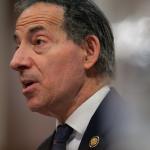We’ve seen that Trump’s didn’t. Neither did George W. Bush’s, which added $5.6 trillion to the deficit, according to the Center on Budget and Policy Priorities. Neither did Reagan’s. As David Wessel of the Brookings Institution pointed out in 2017, the 1981 Reagan tax cut reduced revenue by about 9 percent for a couple of years, prompting Reagan to hike taxes not only in 1982 but also in 1983, 1984, and 1987.
Some people say that President John F. Kennedy’s tax cut, enacted by Lyndon Johnson, yielded a net gain in tax revenue by dropping the top rate from 91 percent to 70 percent. If Miran wants to argue that I won’t dispute him. But anybody who argues this has to concede that an economy can boom (as it did, enviably, from the mid-to-late 1960s) with a top marginal tax rate nearly double what we have today.
Through the 1920s, under three Republican presidents, Treasury Secretary Andrew Mellon dropped the top marginal rate from 73 percent (on income above $1 million, or $23 million in current dollars) to 25 percent. Mellon also repealed a gift tax and halved the inheritance tax, keeping the world altogether too safe for his toxic billionaire descendants Richard Mellon Scaife and Timothy Mellon. The economy, of course, boomed, and there remains today a small but hardy cult of Mellon-and-Calvin-Coolidge devotees who say tax cuts are the reason why. I’ll grant this was a rare instance when the top rate was very high and then, suddenly, very low. If a supply-side tax cut can’t increase tax revenue here, it can’t do it anywhere. Maybe it did.
#Trump #White #House #Brings #SupplySide #Magical #Thinking
Thanks to the Team @ The New Republic Source link & Great Job Timothy Noah








